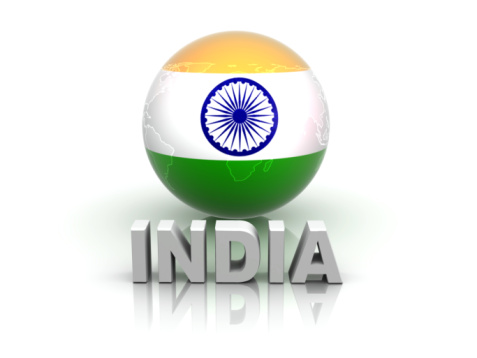In 1991, the second Independence of India took place – there was an opening up of the economy that led, in its own tortuous Indian way, to the opening up of the minds of a section of the population. The educated middle class that had till then either left the country for greener pastures or taken up jobs in the government or with the few MNCs operating then started looking around at opportunities that were being created in India. Entrepreneurship still seemed like something only two sections of society ventured into – those with family wealth or traditional business backgrounds or those without any other option namely, the roadside food shop, the barber and the small store owner. Very few consciously chose entrepreneurship as an option. Then, towards the end of that decade, a remarkable thing began to happen. Young educated middle class Indians suddenly started taking an interest in India: a host of environmental factors played a catalytic role in this phenomenon: the rise of Indian entrepreneurship in the US, the emergence of 1st generation educated middle class Indian entrepreneurs, the creation of aspirations in a increasingly mobile workforce and the media, increased availability of capital and the like. India started getting noticed in the West and India’s arrival on the global stage started getting reported in breathless hyperbole. However, all this euphoric talk about India’s growth and success hid the fact that crony socialism had quietly given way to crony capitalism which was as insidious. Governance and policy making took not just the last rows in the stadium that was cheering “India’s arrival” but were not even in the stadium! The penny naturally dropped on the India story.
Today, we’re confronted by the stark realities of India that the breathless comparisons with China and other countries had somehow managed to paper over. The hubris is slowly and painfully giving away to the realization that the parties celebrating India as a super power had begun too soon. And that there was, quite simply, an enormous amount of work to be done.
In 2012, as India enters its 66th year, our first prime minister’s rousing speech “Tryst with Destiny” is yet again worth reading. Are we anywhere close to redeeming the pledge made, has the new star of hope provided succour and whether hope still springs in the hearts and minds of all of us? While very impressive strides have been made in many areas, especially given the desperate condition at the start of our country’s birth, it is important that we keep in mind the fact that 15% of the world lives in India and over 68% ie about 700million of our people live on less than US$2 a day. Over 17 million people are born (equivalent to the population of The Netherlands), an estimated 40million are unemployed, over 500,000 students graduate each year from various colleges and over 12 million join the workforce each year . The investment required to educate, train, and deploy these large numbers into gainful jobs is in the tens of thousands of crores. And remember, these millions of jobs have to be yet created! Now imagine the public healthcare, water and sanitation, education, travel, housing, electricity, entertainment, banking and financial services that need to be provided to these huge numbers assuming there’re jobs that lead to incomes being generated leading to consumption and investment. Imagine a scenario where tens of millions of young energetic citizens become disillusioned job seekers – the social upheaval possibilities are terribly explosive even to contemplate, particularly in our country.
For far too long, we have been plagued by poverty – of ideas, of ideology and of course economically. Misplaced socialistic policies in the early years of India ensured that poverty was distributed while cronyism ensured that a few made unconscionable amounts of money and enjoyed the trappings of power.
Jobs are created by entrepreneurs. Governments are facilitators and regulators to make sure that everyone’s playing fairly and by the rules that have been created to facilitate the creation of jobs. Wealth is then created by entrepreneurial actions. Only when wealth is created, can there be investments in creating the support infrastructure and services necessary for India to seriously consider redeeming its pledge. And a crucial pre-requisite for this is the need for an entrepreneurial mindset.
Change in every society, in every age, in every sphere of human endeavor has come about because some people, a minority, decided to put their entrepreneurial mindsets to work. And they were able to put their entrepreneurial mindsets to work because they were incredibly passionate about what they believed in. This minority is the entrepreneurial community. And while the term “entrepreneur” is generally used in the context of business and startups, it is important to realize that the entrepreneurial mindset has been, is and will be on display all around us.
Anyone with an entrepreneurial mindset dreams big, is interested in solving problems, seizes opportunities, is unafraid to experiment with new ways of doing things in order to achieve the dream, demonstrates leadership in creating new resources while marshalling existing resources, energizes people to work collectively to executing the dream, is conscious of the need to be fair, is respectful of the laws of the land, realizes the need to act with speed, engages and responds to feedback with a recalibrated approach, is unapologetic about effecting positive change by challenging a prevailing status quo and works incredibly hard. Possibilities of effecting change and making a difference to oneself and to others as against complaining about constraints (“I have no resources, I don’t know too many people, don’t have the knowledge or experience”) is what distinguishes those with the entrepreneurial mindset from the others. They spend positive energy in figuring out ways to create, seek and aggregate resources (team members, finances, networks) to make the possibilities come true. They are not afraid of failure but instead as Vinod Khosla says, “My willingness to fail gives me the ability to succeed”. In other words, keep shooting multiple arrows at the target.
What is it that drove Andrew Wiles for 30 long frustrating and difficult years to solve Fermat’s Last Theorem – ever since he first came face to face with it at the age of 10 – that had confounded mathematicians for over 350 years? What is it that makes a Reinhold Messner, the greatest mountaineer of all time, climb mountains on every continent, losing several of his fingers and toes and putting himself through extreme life threatening hardships such as climbing Mount Everest without oxygen? Surely, it wasn’t the money! What is it that made a significantly deaf, unschooled child grow up to become Thomas Edison, one of the most prolific inventors of all time with over a 1000 patents? Well before IPL, the stuffy establishment of cricket was changed forever in 1978 when Kerry Packer an Australian media baron challenged status quo by signing up 51 of the world’s top cricketers and introduced limited overs cricket under flood lights, with fielding restrictions, with coloured clothing, cheer leaders and the like. How come no one else thought of this before Packer? Would there have been a Nano if not for a Ratan Tata daring to think of a $2000 car for the middle class Indian?
The mightiest empire the world has ever known was shaken to its very foundations by the incredible demonstration of the entrepreneurial mindset by Mahatma Gandhi. For example, he had this to say about Swaraj “we must have a proper picture of what we want before we can have something approaching it”. Landing in India in 1915 as a 46 year old without any real understanding of India and without any mass following, but shaped by his South African experiences on the need for social justice, driven only by a set of passionate beliefs about the need for freedom for India, developed his concept of Satyagraha and energised people through his own unique blend of non-violent politics, lifestyle and use of symbols like the Dandi March.
We all have heard of Amul. It is India’s largest branded impact making organization Amul today impacts over 3 million milk producers and generates over $2 billion in revenues. It is world’s largest vegetarian cheese brand, India’s largest food brand and the largest pouched milk brand. It would be hard to imagine that an Amul could have been created without the entrepreneurial mindset and leadership of Dr Verghese Kurien, who led Amul as it innovated across the value chain. Amul incidentally was founded in 1946 before India’s independence!
From the few less than obvious examples cited above, it is clear that the manifestations of an entrepreneurial mindset are visible across very many areas of human endeavor. As we contemplate an India that can redeem its tryst with destiny, where jobs create economic security for hundreds of millions, we absolutely cannot ignore the seemingly intractable problems that confront us all as citizens. I have long believed that change in India will gain irreversible momentum when the generation born after 1991 enters the work-force. This is the generation that is confident, knowledgeable, technology savvy, is aware, well traveled and is impatient. Fortunately, India is the home to the largest number of such people anywhere in the world.
Resolving these problems requires the energizing of the entrepreneurial mindset that’s latent in each of us. Each of us can make a difference if only we dare to think differently. Changes in the way things are done in government, in politics, in society, in business, in education, healthcare are all eminently possible through entrepreneurial thinking with job creation and facilitation as the important outcome.
Here, therefore, is a question for us to ponder over:
Is it possible for us to imagine that each of us, in our lifetimes, creates – either directly or indirectly – a 100 jobs? Are there not 100,000 people – educated, experienced, entrepreneurial and energetic – who can each take up this challenge? Ten million jobs can be created by this group, indirectly benefiting 50 million.
If it is possible, it is do-able!
The Brihadaranyaka Upanishada has this to say:
“You are what your deep, driving desire is. As your desire, so is your will. As your will is, so is your deed. As your deed is, so is your destiny.”



